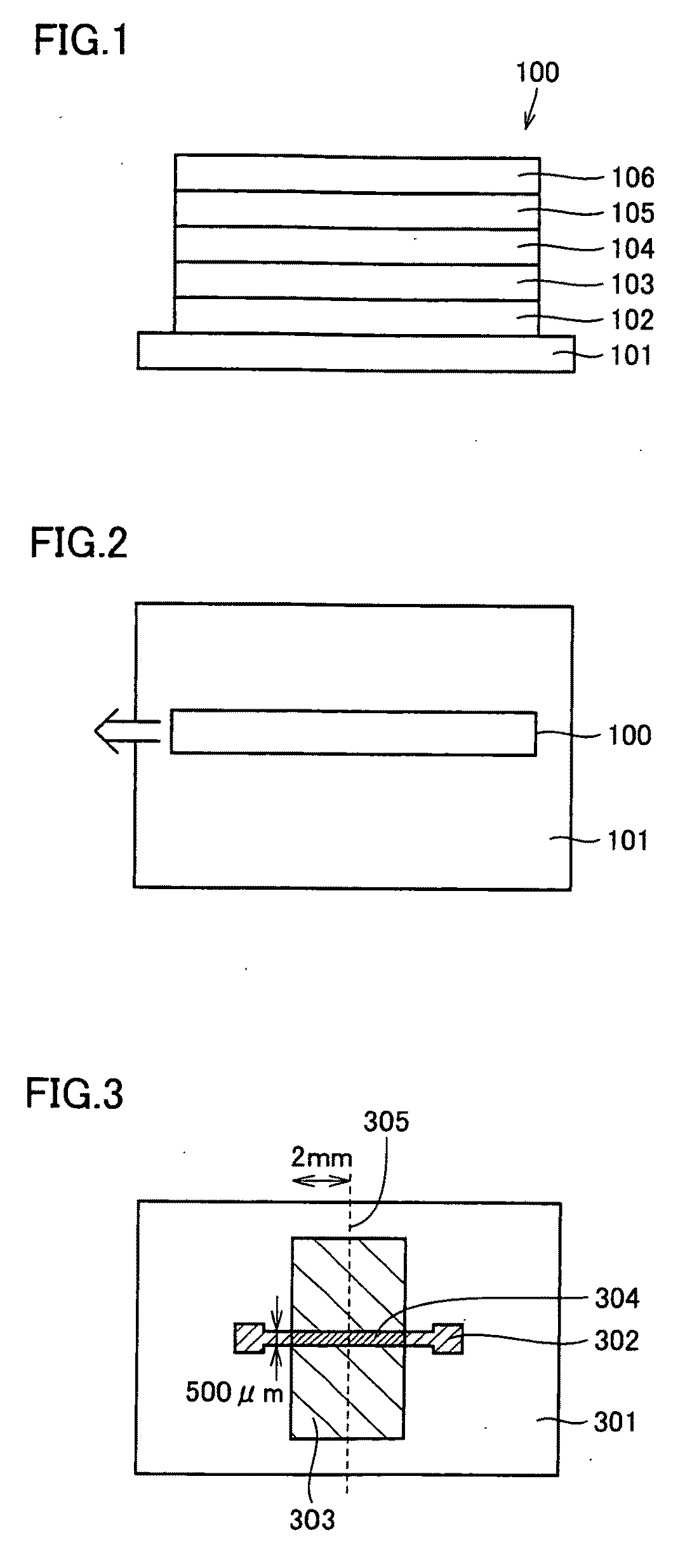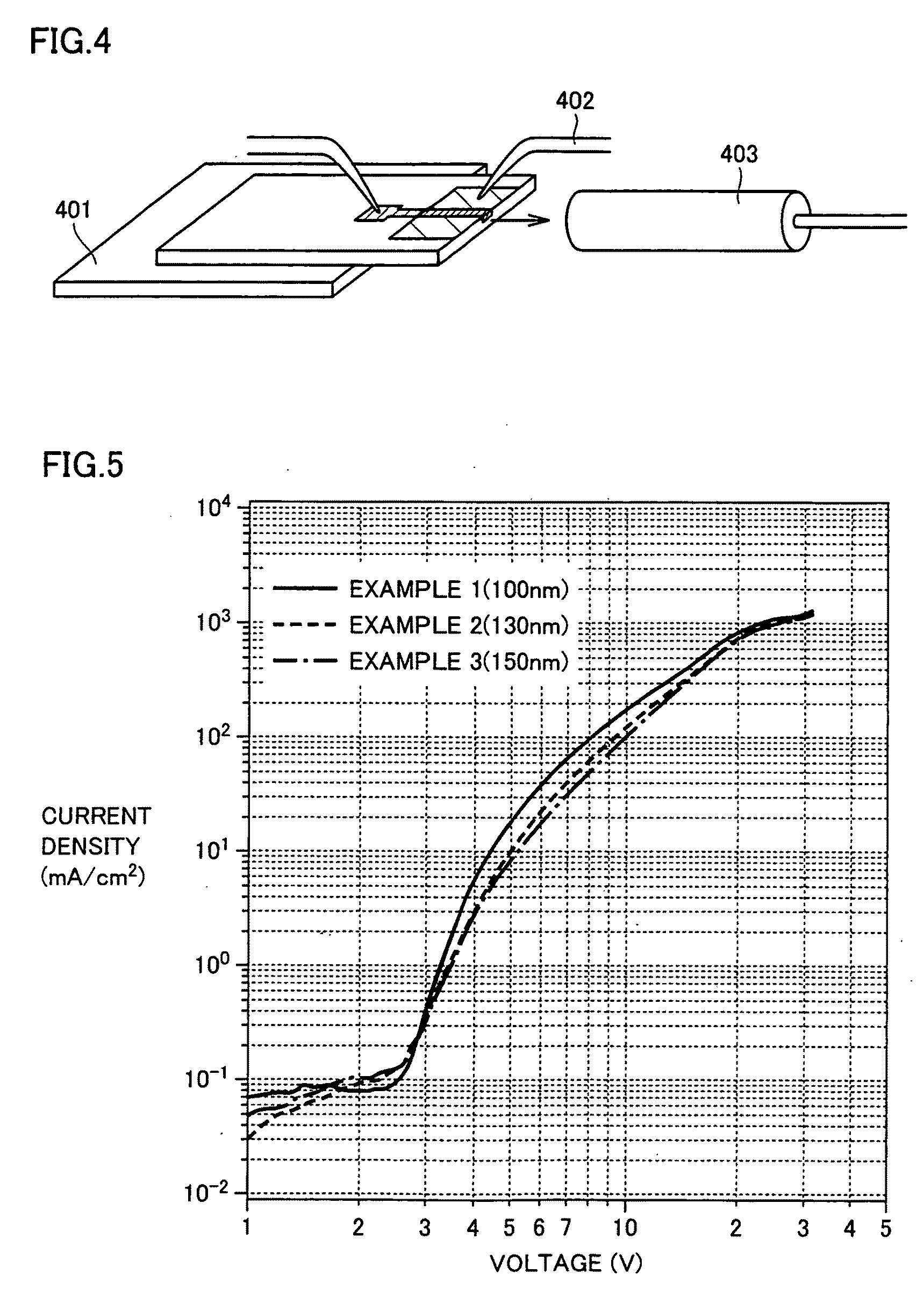Organic Electroluminescence Device and Organic Laser Diode
a laser diode and electroluminescence technology, applied in the direction of discharge tube/lamp details, organic semiconductor devices, discharge tubes luminescnet screens, etc., can solve the problems of optical propagation loss, damage or deterioration of organic films, and increase in the size of devices and others, and achieve narrow spectral width and low energy density.
- Summary
- Abstract
- Description
- Claims
- Application Information
AI Technical Summary
Benefits of technology
Problems solved by technology
Method used
Image
Examples
example 1
[0070]This will be described with reference to FIG. 3. FIG. 3 is a schematic top view showing a structure of an organic EL device manufactured in this example. First, a photoresist film having an aperture of 500 μm in width and 8000 μm in length was formed on a glass substrate 301 by photolithography and lift-off. Then, RF magnetron sputtering was executed to form an ITO layer of 30 nm in thickness over whole glass substrate 301 (ITO target: 10 mass % of SnO2 and 90 mass % of In2O3, flow rate: Ar 30 sccm, pressure: about 1×10−1 Pa, PF power: 20 W). Then, the photoresist film was removed together with the ITO film formed thereon to provide a substrate having a patterned anode layer 302 (ITO layer). This substrate was cleaned with a detergent and an organic solvent, and was subjected to UV-ozone processing.
[0071]Then, a hole injection / transport layer, a light emitting layer and an electron injection / transport layer forming an organic layer were formed in this order by vacuum heating d...
examples 2 and 3
[0072]Organic EL devices were manufactured in the similar manner as the Example 1 except for that light emitting layers have thicknesses of 130 nm and 150 nm, respectively.
[0073]In the manufactured devices having the above film thicknesses, calculated values of the cut-off wavelengths of the optical waveguides were 456 nm, 479 nm and 499 nm with respect to the TE1 mode, respectively. As described later, these values are within the wavelength region of the full width at half maximum of the fluorescence spectrum of the BSB-Cz.
PUM
 Login to View More
Login to View More Abstract
Description
Claims
Application Information
 Login to View More
Login to View More - R&D
- Intellectual Property
- Life Sciences
- Materials
- Tech Scout
- Unparalleled Data Quality
- Higher Quality Content
- 60% Fewer Hallucinations
Browse by: Latest US Patents, China's latest patents, Technical Efficacy Thesaurus, Application Domain, Technology Topic, Popular Technical Reports.
© 2025 PatSnap. All rights reserved.Legal|Privacy policy|Modern Slavery Act Transparency Statement|Sitemap|About US| Contact US: help@patsnap.com



